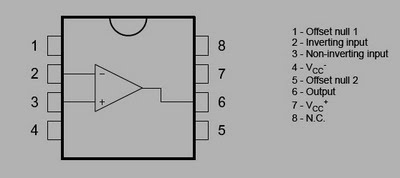

Gain (Av) = Vout / Vin So, 1 = Vout / Vin Vin = Vout. By adjusting the potentiometer at the input, Vs can be varied to different value in the range of 0-9Vdc. In above Voltage Follower Circuit, variable input is given to the non-inverting terminal of opamp and the inverting terminal is given the negative feedback from the output. Below is the circuit diagram of Voltage Follower Circuit: Learn more about Op-amp 741 here.Īs we said that it’s a Unity gain Amplifier means the gain of the Amplifier will be 1 and whatever is fed as input, can be received as output. In this Wireless Switch Circuit, LM741 is used to provide the Low to high Clock pulse to IC 4017, for each time when one passes a hand over the LDR. And if the voltage of inverting input (-) is Higher than the non-inverting end (+), then the output is LOW. When the voltage at non-inverting input (+) is higher than the voltage at inverting input (-), then the output of the comparator is High. The main function of this IC is to do the mathematical operation in various circuits. In Op-amp IC 741 PIN2 is an inverting input terminal and PIN3 is non-inverting input terminal. An operational amplifier IC is used as a comparator which compares the two signal, the inverting and non-inverting signal. LM741 operational amplifier is a DC-coupled high gain electronic voltage amplifier. We already discussed about it in our Non-inverting Operational Amplifier tutorial, here we will build it with real hardware and test it. Here we construct a voltage follower using Opamp LM741 and see how its output follows the input.

It is also commonly known as Unity gain Opamp Amplifier or Opamp Buffer. Voltage Follower is simply a circuit in which output follows the input, means output voltage remains same as input voltage.


 0 kommentar(er)
0 kommentar(er)
